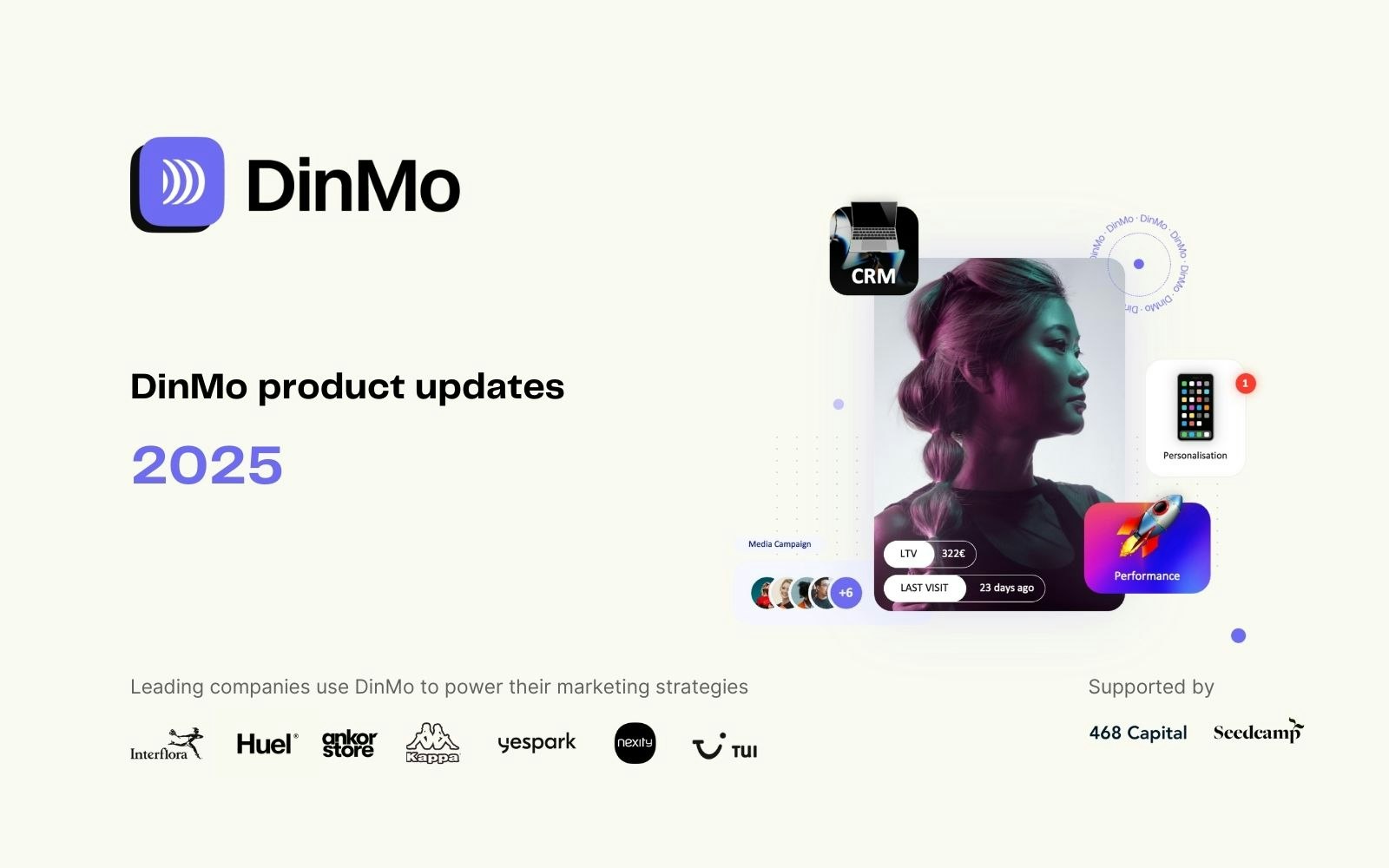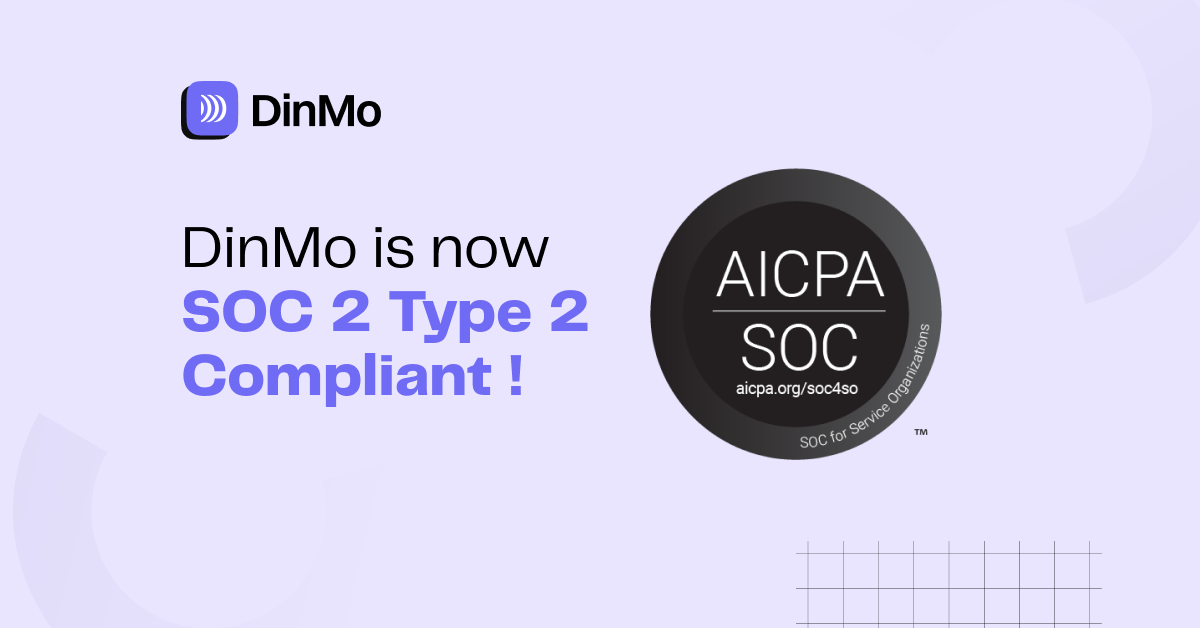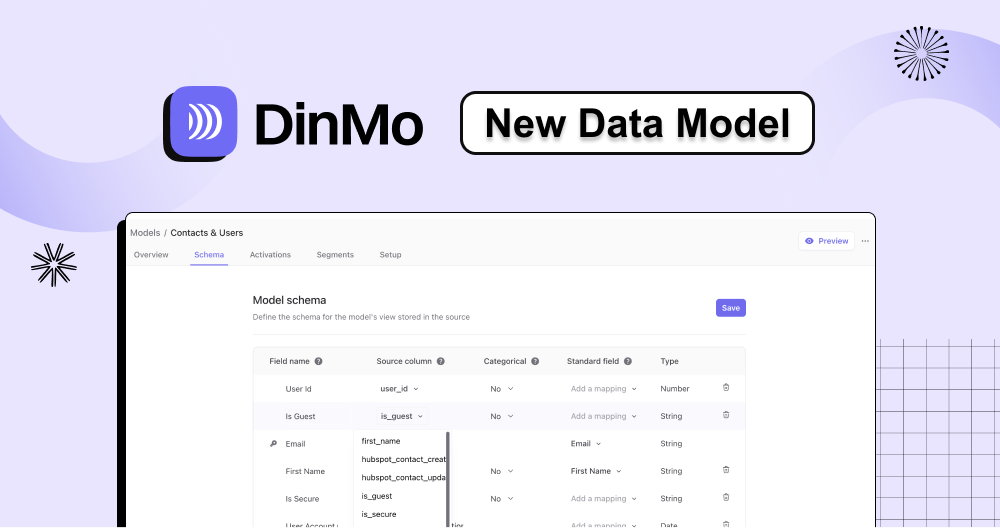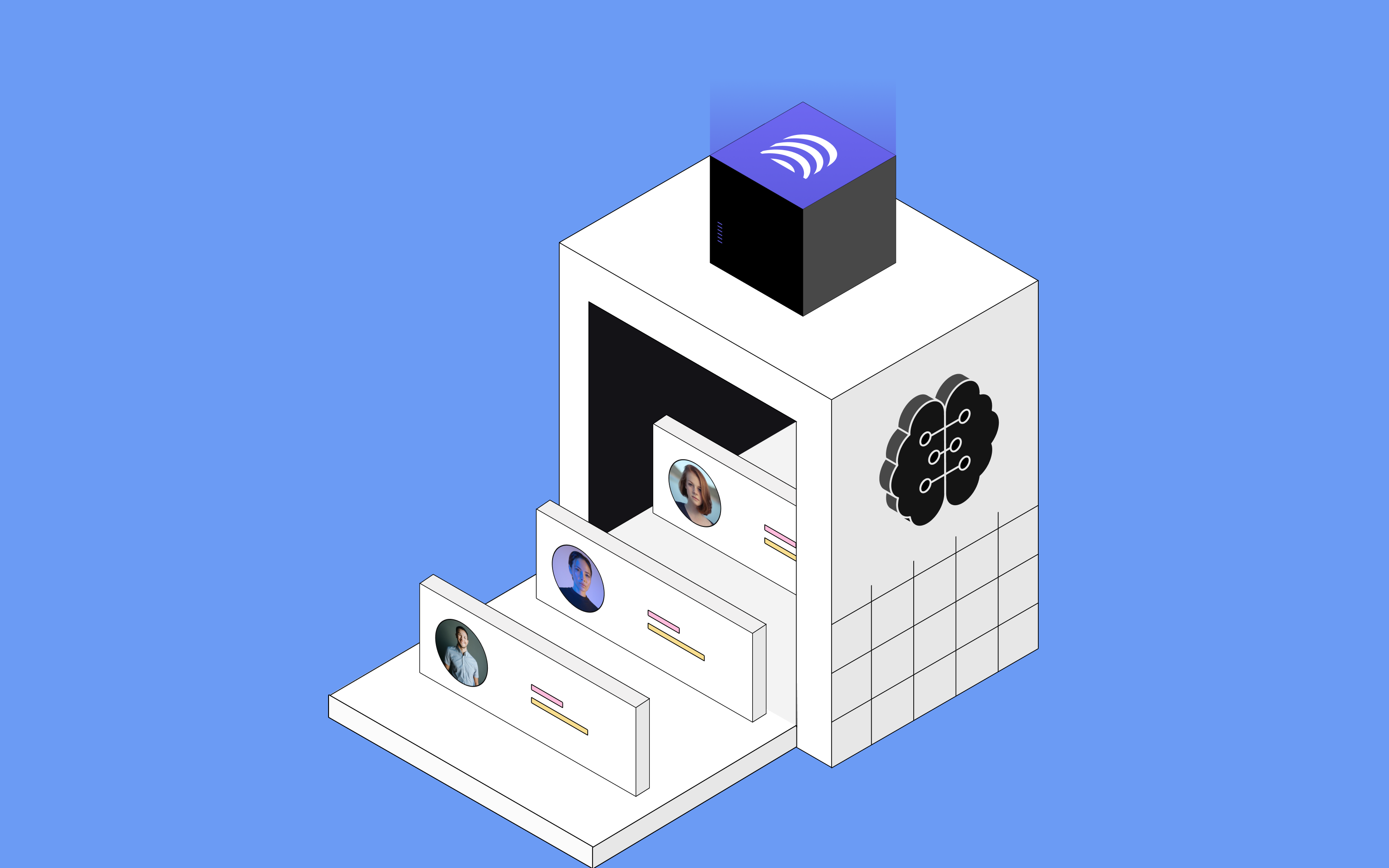
Boost your performance with AI-powered predictions on DinMo
4min • Last updated on Dec 16, 2025

Nils Hasselmark
Product Manager
At DinMo, our mission has always been to empower marketers by making data more accessible, actionable, and impactful.
We started this journey by eliminating the need for marketers to rely on data engineers for synchronising data across marketing platforms. At first, we provided a powerful Reverse ETL engine that can be leveraged with a no-code segment builder.
🚀 Today, we are excited to announce a groundbreaking advancement that takes our commitment to the next level, enhancing our current Composable CDP.
We're thrilled to introduce our latest feature in the DinMo platform: AI Customer Predictions. This major update brings the power of machine learning directly into the hands of marketers, no technical expertise required.
The contribution of predictive AI in marketing
In recent years, the cost of marketing has soared, largely due to the increasing restrictions on customer data management.
With limited access to relevant data, marketing campaigns have often been forced to target overly wide audiences that include users who have lost interest in your brand, those who might be interested but not at the right moment, or even customers who are already actively engaged.
Machine learning has emerged as a game-changer in addressing these challenges, far outperforming traditional statistical methods in determining who to target, when, and how. After years of promising research, AI technologies are finally making their way into the business world, driven by advances in GPU capabilities. These new technologies to boost business operations, especially marketing.
Unlike conventional approaches, machine learning models excel at predicting future customer behaviours on an individual level, taking into account how each person may respond to specific marketing efforts.
This approach is known as Next Best Action (NBA). However, until now, leveraging these powerful techniques required businesses to invest in dedicated machine learning engineers—an expensive and risky endeavor that many companies have been hesitant to undertake.
That’s where DinMo comes in. With this update, we are making cutting edge machine learning technologies accessible to all, regardless of their technical expertise.
What are DinMo’s Customer Predictions?
This update introduces AI Customer Predictions in DinMo, empowering you to predict key customer attributes:
Purchase propensity: predicts which customers are likely to make a purchase (and when they're likely to make one)
Churn propensity: predicts which customers are the most at-risk, for targeted interventions and win-backs.
Expected additional Customer Lifetime Value (CLV): identifies the most promising customers, for delivering personalised messages and triggering loyalty and rewards-based campaigns.
Product recommendations: uses customer preferences and past behaviour to identify new upsell or cross sell opportunities, to drive bundling and discount strategies.
The underlying machine learning models are trained specifically on your own customer data, capturing the unique purchase patterns and behaviours of your business.
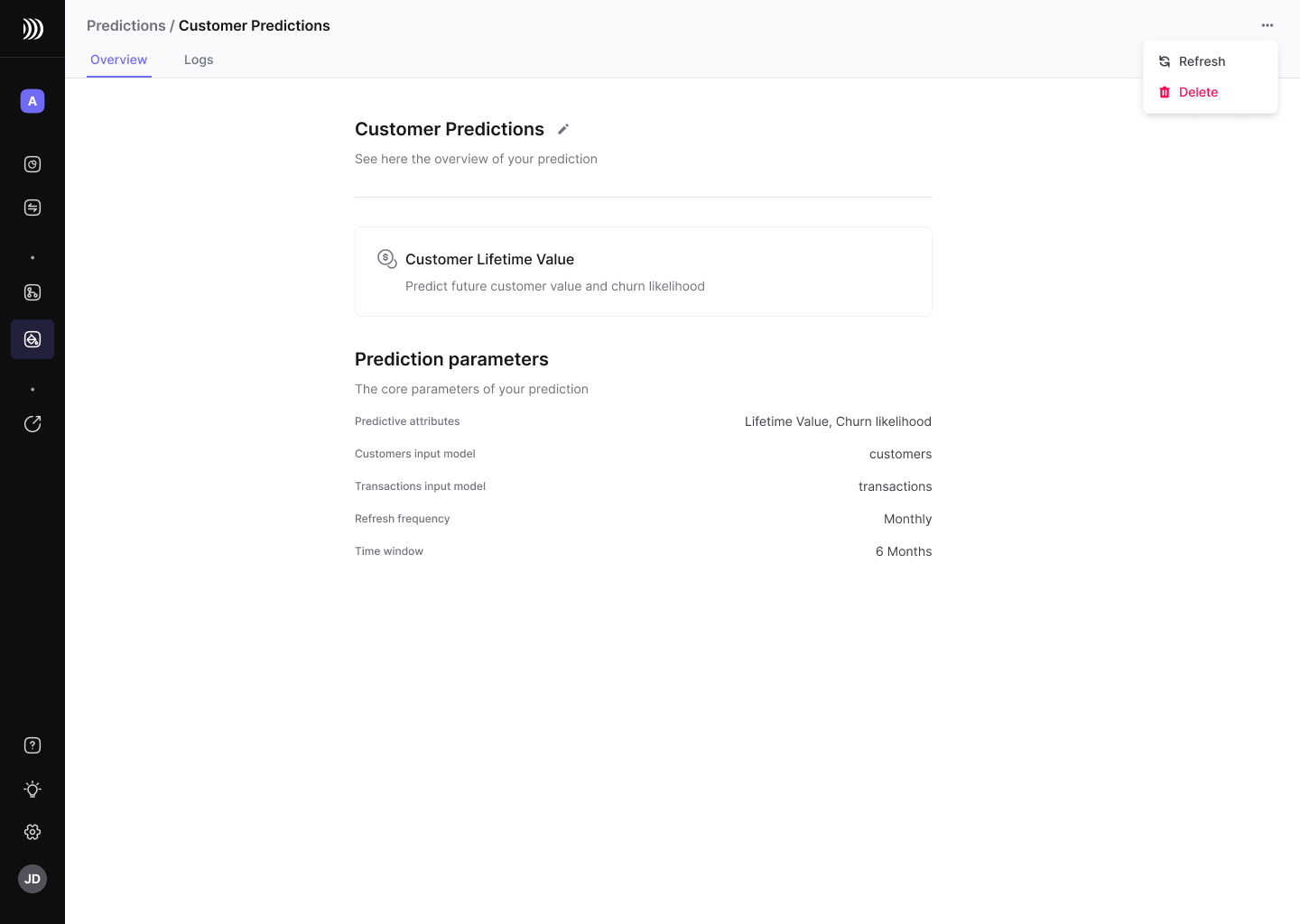
DinMo's platform: all predictions
Prediction values are refreshed daily, to capture the most recent individual customer behaviours. We also understand that macro customer behaviour may evolve due to factors like economic shifts, inflation, and changing consumer sentiment. To ensure that our prediction models remain accurate and relevant, DinMo’s models are regularly re-trained to adapt to these dynamics.
How to use predictive metrics in marketing strategies?
Optimise paid media investment ⤴️
Segments based on predictive attributes can be used to optimise your media budget:
High Purchase Propensity segment: The use case for this segment involves delivering retargeting ads to customers with a high purchase propensity, utilising paid social channels. The aim is to get people to actually buy your products.
High Customer Lifetime Value (CLV) Segment: This segment focuses on customers predicted to have a high lifetime value. The recommended use case is to deliver retargeting ads specifically to these high CLV customers via paid social media, to get them actually buy on a regular basis. You can also run lookalike campaigns on that specific segment to improve your acquisition.
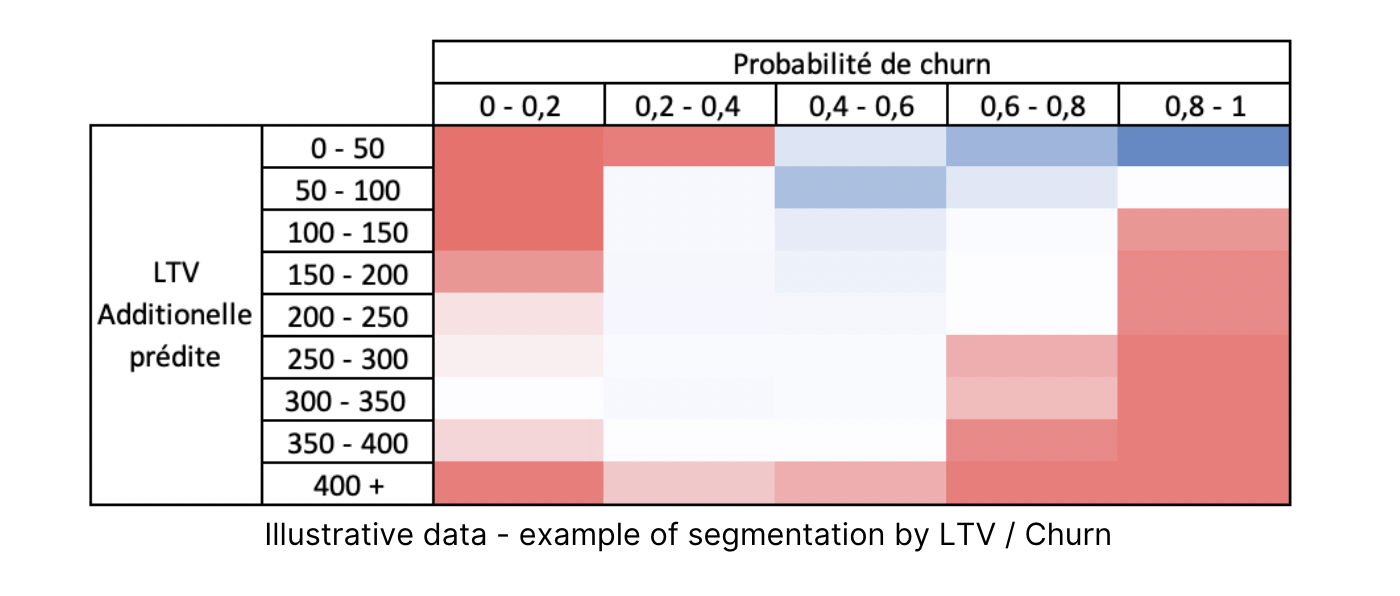
Low Purchase Propensity Segment: For customers with a low likelihood of purchasing, the strategy is to exclude them from retargeting campaigns. This approach also uses paid social channels and aims to optimise cost efficiency. We observed a 18% improvement in ROAS on average with our customers.
Overall, each segment has a tailored strategy that leverages paid social channels to optimise marketing efforts based on the segment's purchase behaviour and potential value.
Cultivate customer loyalty and prevent churn 💞
One of the classic use cases for predictive attributes is to prevent churn and maximise the loyalty of existing customers. For this, you can use the following segments:
Fledgling Customers Segment: This segment includes customers who are in the early stages of their relationship with the brand. The use case is to deliver tailored offers to these fledgling customers to encourage higher lifetime value (CLV). Activation channels include Paid Ads and Email/SMS. The success metrics for this strategy are repurchase rate, CLV, and Average Order Value (AOV).
Product Recommender Segment: Focus on providing personalised product recommendations within lifecycle campaigns to enhance customer experience and satisfaction. The use case is to include these product recommendations in email and SMS campaigns for personalisation. The effectiveness of this approach is measured by the repurchase rate and CLV.
Engaged Prospects Segment: This segment targets highly engaged non-purchasers, by delivering tailored email series to these prospects to encourage conversion. The most common activation channels for this strategy are Email and SMS.
High Churn Propensity Segment: Targets customers who are at high risk of churning, by re-engaging these customers through various owned and paid channels, such as Email, SMS, and Paid Ads, to decrease churn.
Priority Win-Back Segment: This segment focuses on customers who have already churned but have a high potential lifetime value (CLV). You can use targeted offers to win back these valuable customers. The strategy involves using Email, SMS, and Paid Ads to reach out to these customers.
Overall, you must consider using targeted strategies and personalised communication through various channels (Email/SMS, Paid Ads) to boost customer loyalty, increase repurchase rates, and improve lifetime value across different customer segments.
Final thoughts
To sum up, with DinMo’s AI Customer Predictions feature, you gain a powerful tool to enhance your marketing strategies, optimise campaigns, and drive better results. Experience the future of data-driven marketing today—no technical expertise required. 🌟
If you want to learn more about the use of AI attributes, feel free to contact us!


















